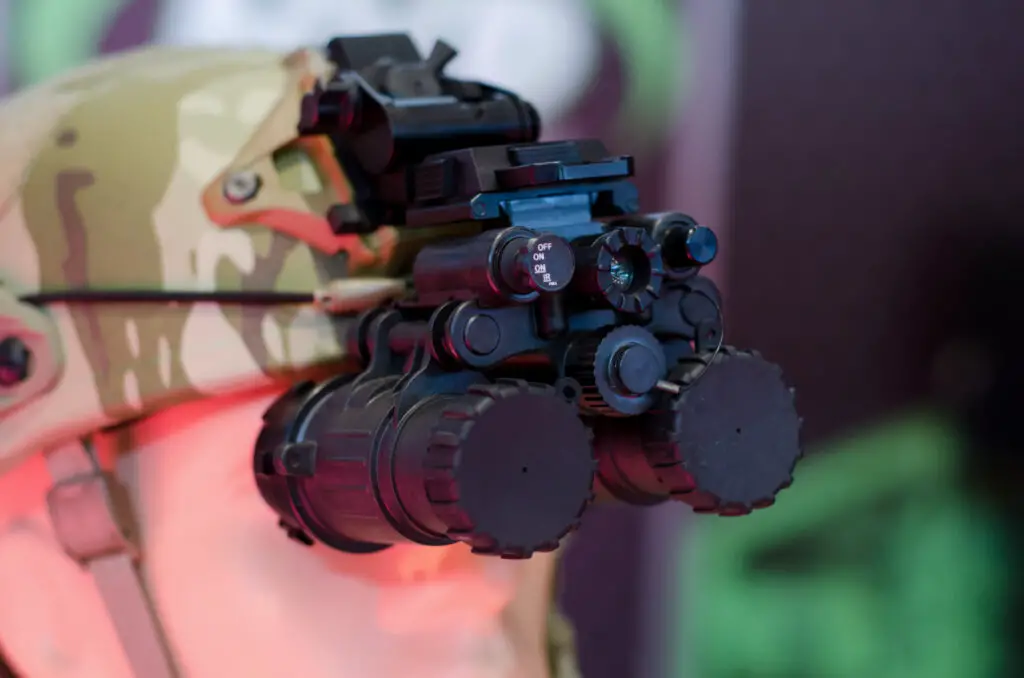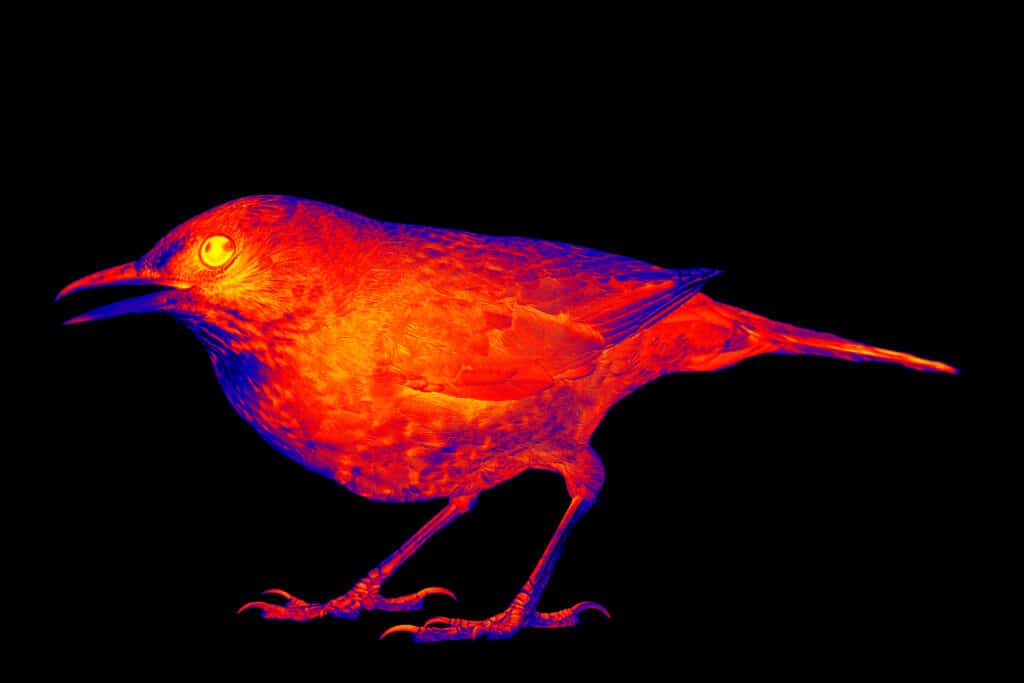
Night vision goggles are incredible pieces of modern technology, and many people are interested in owning a pair for themselves. But what kind of price should you expect for these goggles?
There is a wide range of prices for various night vision devices; anywhere from $20 to $10,000. These are the extremes, however. Depending on their other specifications, including generation, magnification, battery life, angle of view, etc., night vision goggles cost around $200-$3,000.
Depending on what you want to use your goggles for, you may want to put in a little extra money to get a higher quality experience. If you plan on simply watching the raccoons and stray cats outside at night, you probably don’t need the most high-end pair. If you need NVG for work/field assignments or hunting, however, you’ll probably want to invest a little more. There are several factors you should consider, and each will be discussed below.
Magnification
There are different types of night vision devices, the most common being goggles, binoculars, and monoculars. Most night vision binoculars and monoculars have a certain degree of magnification, just like their non-night vision counterparts. The higher the magnification number, the better you will be able to see objects that are far away from you.
Goggles do not have magnification; instead, they simply allow you a normal range of sight, with the additional benefit of being able to discern images in the dark that the human eye normally can’t, of course.
Decide whether your intended use for your NVG would require you to be able to see far away objects, or whether seeing at your normal range would be sufficient. Models with magnification are likely to be more expensive.
Generation
Night vision devices are categorized into levels called generations, which indicate the quality and capabilities of the technology in each device. There are four generation levels, and the higher the generation, the better the goggles.
Generation 1: NVG with this classification are entry-level devices. They allow the user to see in the dark using tiny glass tubes that amplify ambient light. Generation 1 goggles are the least expensive, but also have the lowest resolution and shortest battery life. They’re great for beginners.
Generation 2: These devices are great for hunters and shooters. This generation uses micro-plate technology that amplifies electrons; in short, it amplifies light significantly better than generation one devices. They also tend to have a wider viewing range and have much longer battery life.
Generation 3: Generation 3 devices and above are well-suited for professional applications. This generation is best for law enforcement and search and rescue personnel. These goggles use a chemical called Gallium Arsenide to amplify the light you can see, which works even better than generation 2’s microplates.
Generation 3 NVG are also acceptable for military applications; they are military-grade. They have a wider viewing range than the generations below them, are significantly more expensive, and contain more features.
Generation 4: The highest generation, these devices are best suited for tactical applications. They use autogated (auto-adjusting, put simply) or filmless image intensifying tubes to amplify light and work the best out of all NVG technologies.
Naturally, generation 4 night vision devices are the most expensive of all. However, they create incredibly sharp and high-quality images, so customers such as the military find them well worth the price.
Infrared/Thermal Capability

Night vision devices were designed to use ambient light to allow you to see objects in darkness, but nowadays, most come with either infrared or thermal technology as well.
Infrared: Goggles with infrared capabilities usually have detectors that can capture infrared rays and create an image that you can see. Infrared rays are emitted by anything that creates heat.
Even if there was no ambient light, with this technology you would still be able to detect your surroundings based on the temperatures of the objects around you.
Thermal: This technology works almost exactly the same as infrared technology, except instead of detecting infrared rays, it detects the actual heat waves that an object releases.
Because thermal technology doesn’t depend on any light to create an image, these goggles can be used in broad daylight as well, which is not possible with infrared technology.
Objective Lens Diameter
This specification is simply the diameter, in millimeters, of the objective (or front) lens of night vision devices. The larger the diameter of the lens, the more light will be allowed through.
This matters a little more for NVG that relies heavily on ambient light to create an image. Higher generations might have a smaller lens, but thanks to the technology they use, the image is still high-quality.
Night vision binoculars have two lenses, and they are almost always the same size (which means they also have the same objective lens diameter).
Weight
Weight is important because it affects the transportability of your night vision device. More lightweight devices can be carried and held to one’s eyes easily, but if they are slightly heavier, you’ll need to purchase a neck strap, helmet, or mount to use them comfortably.
Anything over about 1.5 lbs is getting into the range of “uncomfortable to hold for long periods of time.” The heaviest NVG sometimes requires a tripod for the best performance.
Consider how you plan to use your night vision goggles to determine the weight range you’ll want to stay in. If you will be moving a lot, a lightweight device will be ideal.
Difference Between NVG Generations
There are many differences between each generation between the ion barriers, microchannel plate, gallium arsenide, photocathodes, etc. For generation 1, gets some nighttime capability. For generation 2, has a closer performance to a Gen 3 than a Gen 1. For generation 3, is used by the Us Military and is the gold standard of technology. For generation 4, the US Military has no classification on it.
How to Pick the Right NVG for You
To find the right NVG for you is all depending on the situation and use. If you need a night vision device for a scope on a gun, then using Monoculars is the best option. If you are looking for a head-mounted piece then goggles are the best option for that situation.
This all depends on what it is needed for. For the different usage of devices, there will need to be more research required.
Dimensions
Dimensions are a type of measurement of length, depth, height, or breadth. Devices have similar, but different dimensions. The dimensions tell the size that you will be needing and a relative understanding of what it will look close to in person. Size often depends on the use and size of hands.
There are differences in the dimensions depending on what type of goggles you decide to get. Each different goggle is used for a different purpose is then sized differently to meet those needs. A model like the L3Harris GPNVG (Ground Panoramic Night Vision Goggles) has a dimension of 5.625in(L) x 8.50in(W) x 3.75in(H).
While for a AGM Global Vision NVG-40 Series Night Vision Goggles/ Binoculars have an overall dimension of 115mm(L) x 118mm(W) x 74mm(H) or 4.5in x 4.6in x 2.9in.
Angle of View

The Angle of View is the same thing as the Field of View. A field of view is the open observable area that a person can see with their eyes or an optical device. For a human, the field of view spans up to 120 degrees of an arc, but most of the arc is considered peripheral vision. The field of view has the same concept as the human eyes but is more limited in range.
The Standard Field of View for goggles is between 6 and 7.5 degrees. This comes from the difference between an apparent angle of view and a real field of view. The angle is different from each other depending on the distance from the object. An object can be seen at an apparent angle of view, but the actual angle that the object can be seen is that of a real field of view.
If an object is 1,000ft away from the field of view, then the apparent angle of view is 1000/10 of the distance. Inferring that the apparent angle of view is seen at 65 degrees, then the real field of view is that of 6.5 degrees.
Battery Life
Battery life in NVG is directly associated with their generation level. Generation 1 has the lowest battery life, while generation 4 has the highest.
Since generation 4 devices are meant for professional applications, even military applications, it is more crucial that they have high battery life. These high-end devices usually have a battery life of well over 60 hours. Generation 3 usually sits around 60 hours, generation 2 has about 40, and generation 1 can range anywhere from 20 hours to 1 hour.
Goggles that have a longer battery life are more expensive to produce, so they are also more expensive to buy.
Focus Range
Focus range is the minimum distance at which focus can be obtained with the limitations of the lens. Focus range is the combination of lens diameter and focal length. Lens diameter is the physical measurement of the diameter of the most-front part of the lens. Focal length is the distance between the center of the lens and its focus. the relationship between lens diameter and focal length is described by the f-ratio.
If a lens has a focal length of 50mm and a lens diameter of 10mm, then the f-ratio would be 50mm/10mm=f5. This equation and example can be used to calculate the needed information that can be missing.
Water Resistance

Many pieces of advanced technology should be able to stand up to a certain level of weathering. Since many night vision goggles cost thousands of dollars, you’ll want to make sure they can withstand a bit of water. Below is a table that lists some popular night vision goggle models, as well as their relevant specifications (including water resistance).
| Nightfox Swift Night Vision Goggles | Sightmark Ghost Hunter 2×24 Night Vision Monocular | Yukon NVMT Spartan 4×50 Night Vision Monocular | NightStar 1x20mm Head Mounted Night Vision Binoculars | Nyte Vu NV60 night vision goggles | ATN NVG7-2/WPTI Night Vision Goggles | Bering Optics PVS-7BE Night Vision Goggles | AGM Global Vision Wolf-7 Night Vision Goggles | ATN NVM-14 Gen. 3 Night Vision Goggle Scope | ATN PVS14-3 Generation 3 Night Vision Monocular | Armasight Discovery 5x Gen 3 Night Vision Biocular | |
| Price | $180 | $240 | $270 | $379 | $500 | $1600 | $2,000-$3,000 | $1800-$2,300 | $2,500 | $2,900 | $2,999 |
| Magnification | 1x | 4x | 4x | 1x | 1x | 1x | 1x | 1x | 1x | 1x | 5x |
| Generation | 1 | 1 | 1 | 1 | 1 | 2 | 2 or 3 | 2 | 3 | 3 | 3 |
| Infrared/Thermal Capability | IR | IR | IR | IR | IR w/ camera lens | IR | IR | IR | IR | Unknown | IR |
| Objective Lens Diameter | Unknown | 50mm | 50mm | 20mm | Unknown | 26mm | 26mm | 24mm | Unknown | 27mm | 108mm |
| Weight | 0.74 lb | 0.88 lb | 1.32 lbs | 0.97 lb | 0.75 lb | 1.1 lbs | 1.1 lb | 0.9 lb | 0.74 lb | 0.7 lb | 2.9 lbs |
| Dimensions | 6.69 x 5.51 x 2.76 in | 12 x 9 x 5 in | 8.5 x 4.7 x 3.2 in | 4.6 x 4.2 x 2.1 in | 6.25 x 3.25 x 2.5 in | Unknown | Unknown | 7.4 x 4.8 x 2.8 in | 5.5 x 2 x 2.7 in | 4.5in x 2.14in | Unknown |
| Angle of View | 10 degrees | Unknown | 15 degrees | 44 degrees | 22 degrees | 40 degrees | 40 degrees | 40 degrees | 40 degrees | 40 degrees | 9 degrees |
| Battery Life | 3 hrs | 20 hrs with IR, 72 hrs without IR | 30 hours | Unknown | 1 hr | 60 hours | 60 hours | 60 hours | 40 hours | 40 hours | 50 hours |
| Focus Range | Unknown | Unknown | 5 yards to infinity | 40in to infinity | Unknown | 9.84in to infinity | 10in to infinity | 9.84in to infinity | 9.84in to infinity | 9.84in to infinity | 10m to infinity |
| Eye Relief | N/A | Yes | Yes, 15mm | Yes, 10mm | N/A | Yes, 25mm | Unknown | Unknown | Yes, 25mm | Yes, 25mm | Unknown |
| Water Resistance | Slightly water resistant | No | Unknown | Unknown | Unknown | Unknown | Yes | Waterproof | Unknown | Waterproof | Unknown |
Difference Between Goggles, Binoculars and Monoculars
A big decision is to decide what is best. There are many differences between the types of night vision devices. For each has a different use and abilities.
Goggles are devices that allow both eye viewing and can be head-mounted, but this has no magnification. These feel natural when wearing them and there is a little curve to them.
Binoculars is a device that has two eyepieces and has magnification built into the set. Unfortunately, these devices are too heavy to be made into head-mounts, so they are mostly handheld items.
Monoculars is a device that has a single eye unit that has no magnification. These are versatile out of the devices for they can be used as many different uses. It can be head-mounted, compacted, and attached to a scope.
Military-Grade Night Vision Goggles
The U.S. military frequently commissions large orders from night vision goggle suppliers. They use a variety of designs, from monoculars to binoculars and goggles. The models listed below are night vision products that have either been ordered by the military or have been ranked as military-grade.
- BAE Systems’ ENVG III/FWS-I
- Leonardo DRS’s ENVG III
- L3’s ENVG-B
- ATN NVM14-2 Night Vision Monocular, Gen 2+
- BNVD-15 Gen 3AG-HS Dual Tube Night Vision Goggle Hand Select
OUR RECOMMENDED TACTICAL GEAR LIST:
- Best Health and Fitness Tracker, Whoop. Get 1 Month Free: See it here!
- EDC Assisted Opening knife we can’t live without: See it here!
- Best EDC Concealed Carry Pistol: See it here!
- Extreme Performance Morning Dink: See it here!
- Best 3D Printer For Gun Parts and Accessories: See it here!
- Our Top Rated EDC Flashlight: See it here!
- AR Red Dot Sight We Can’t Live Without: See it here!
- Best Handgun Safe For Quick Access: See it here!
- Top Wireless Security Camera For Home Security: See it here!
- The Range Bag You’ve Always Been Looking For: See it here!
- CIA Approved Sharp Shooting Course: See it here!

